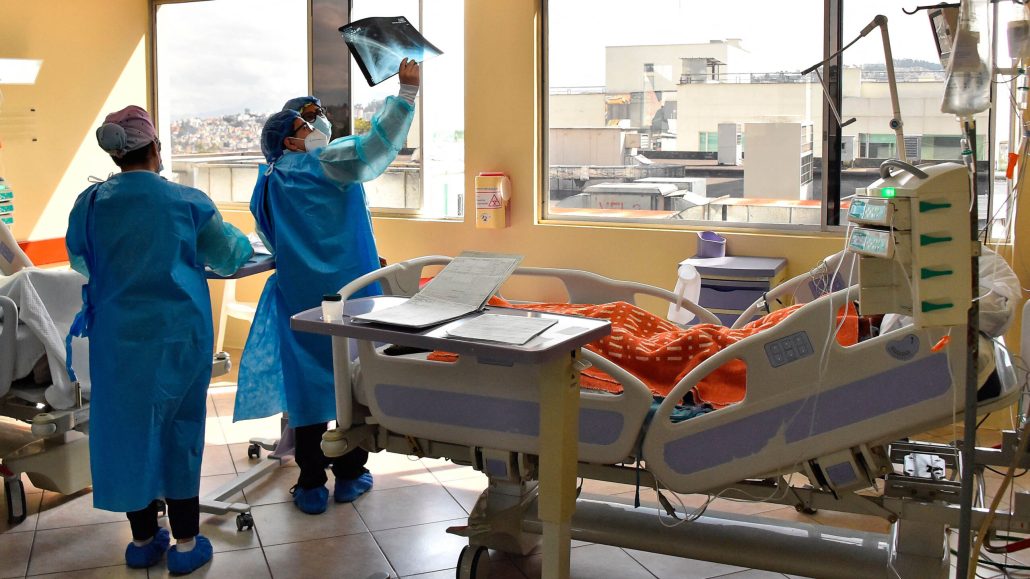Immune cells’ intense reaction to the coronavirus may lead to pneumonia
The virus appears to target macrophages that reside in the lung tissue

Health workers in Ecuador examine a chest X-ray from a COVID-19 patient in early 2022. A new study suggests that immune cells that reside in the lung tissue may play a role in the progression of a coronavirus infection to pneumonia.
RODRIGO BUENDIA/Getty Images